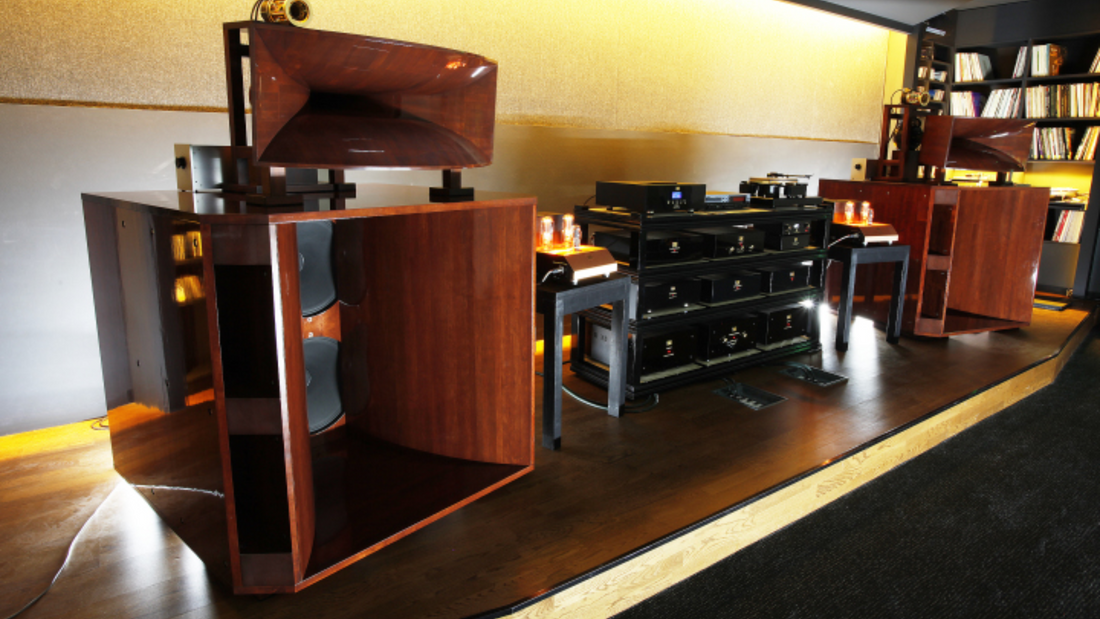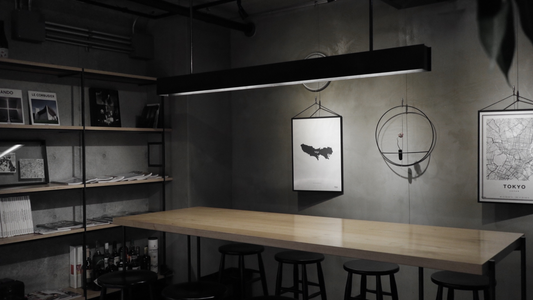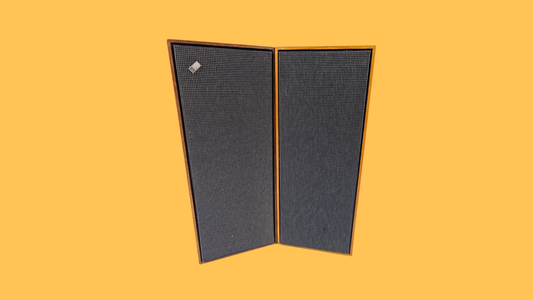
GIP Laboratory — Field Coil Revival in the Japanese Tradition
By Rafi Mercer
There are sounds that feel carved in wood, weighty and permanent. And then there are sounds that feel lit from within, alive with current. Field coil loudspeakers belong to the latter. Before permanent magnets became standard, drivers were powered by electromagnets — coils energised by direct current, their voices sharper, more immediate, more present. Most companies abandoned the technique after the 1940s. But in Japan, a culture that reveres fidelity’s lost branches, GIP Laboratory chose to bring it back. In listening bars, their systems stand as rare reminders that electricity itself can be an ingredient in beauty.
Founded in 2006 by Kazuo Kiuchi in Hyogo Prefecture, GIP set out not to imitate but to resurrect. Inspired by Western Electric’s legendary 555 compression drivers and 15A horns, GIP began producing modern recreations — drivers, horns, amplifiers — built with the same devotion to field coil technology. Each unit is hand-assembled, often in limited numbers, their presence more akin to luthiery than mass manufacturing. To hear one is to hear history revived, not as nostalgia but as living practice.
I remember a dim bar in Kyoto where a pair of GIP field-coil drivers sat in wooden exponential horns, glowing faintly under the low light. A Chet Baker record spun — Chet Baker Sings. The voice came forward with intimacy that startled. It wasn’t merely detailed; it was embodied, as if electricity itself were carrying breath into the room. Patrons sat almost reverently, the music pulling silence around it, every word sharpened by that peculiar energy of field coils.
That energy is difficult to describe. Compared with permanent magnet drivers, field coils seem faster, more dynamic, more alive. Notes don’t just sound; they arrive with intent. For listening bars, that quality can turn an ordinary evening into a ceremony. The record becomes not just playback but revelation, as if the air itself were charged.
Visually, GIP systems evoke their Western Electric ancestors: large wooden horns, grey-painted metalwork, drivers that look like industrial artefacts from another era. In bars, they carry weight not just as sound sources but as objects of reverence. Patrons may not know the difference between field coils and ferrite magnets, but they feel the difference in atmosphere. These are not just speakers; they are presences.
Compared with the monumentality of Rey Audio or the artisanal polish of Living Voice, GIP is more monastic. It is fidelity as devotion, a return to an almost lost craft. Bars that choose them are making a statement: that listening is not about convenience, not even about fashion, but about carrying forward a thread of history that might otherwise have been broken.
Today, GIP Laboratory continues to refine its line, offering systems that range from near replicas of 1930s theatre gear to bespoke installations for dedicated rooms. Each one is a reminder that fidelity has never been a single path, but a branching tree — and that some branches, when revived, bloom with unexpected beauty.
In the end, GIP represents more than just loudspeakers. It represents fidelity as revival, as continuity. In a listening bar, where silence, ritual, and presence matter, that revival becomes atmosphere. And when the record ends, the glow of the field coils seems to linger, as if the current itself were reluctant to let go.
Rafi Mercer writes about the spaces where music matters. For more stories from Tracks & Tales, subscribe, or click here to read more.














